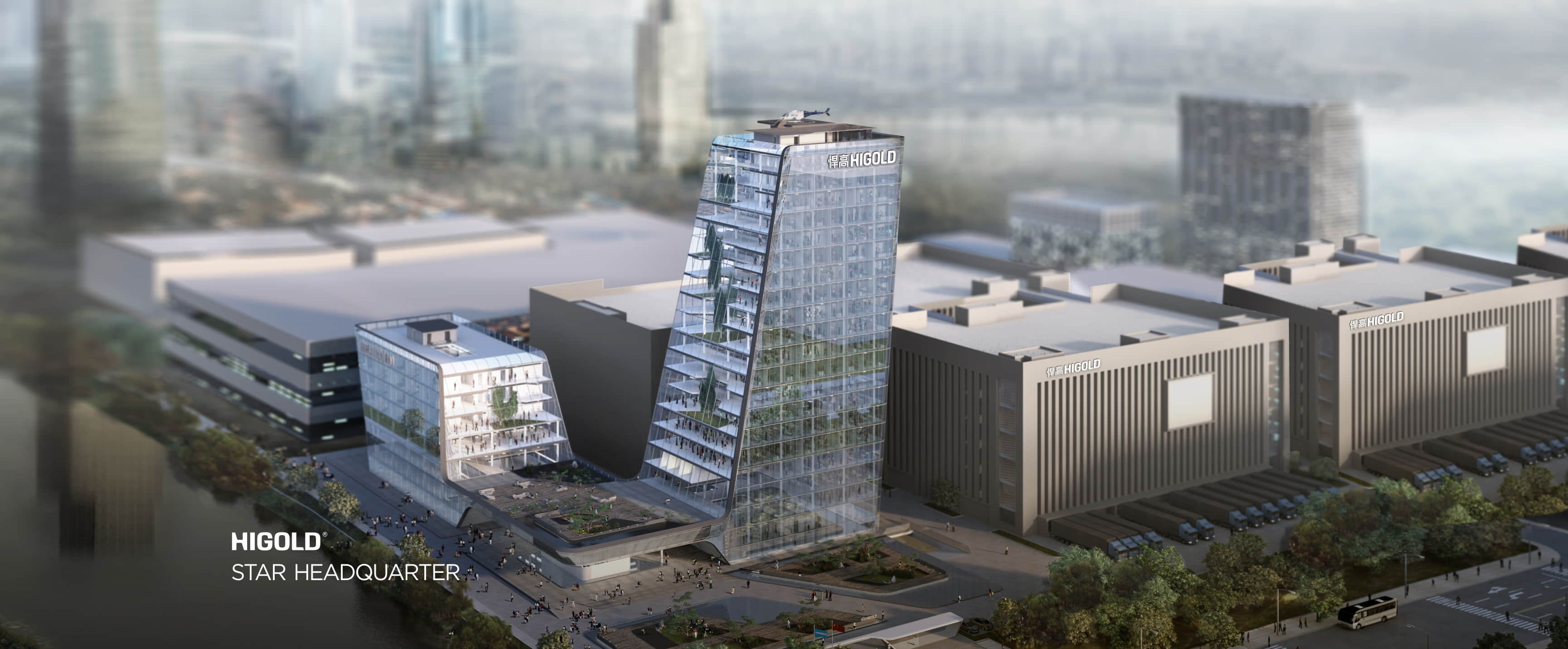In modern homes, double bowl kitchen sinks have almost become standard equipment in kitchens.
They can handle tasks such as washing vegetables, cleaning, and draining water simultaneously, making kitchen work more efficient. However, many people find after using it for a period of time:
Why is my double bowl kitchen sink draining slower and slower?
Why are the water levels on both sides always out of sync?
Why is the water flow still not smooth even after cleaning the drain?
Poor drainage not only affects the user experience but can also lead to odors, water accumulation, and even bacterial growth.
This article will systematically analyze the various reasons for poor drainage in double bowl kitchen sinks and provide scientific solutions.
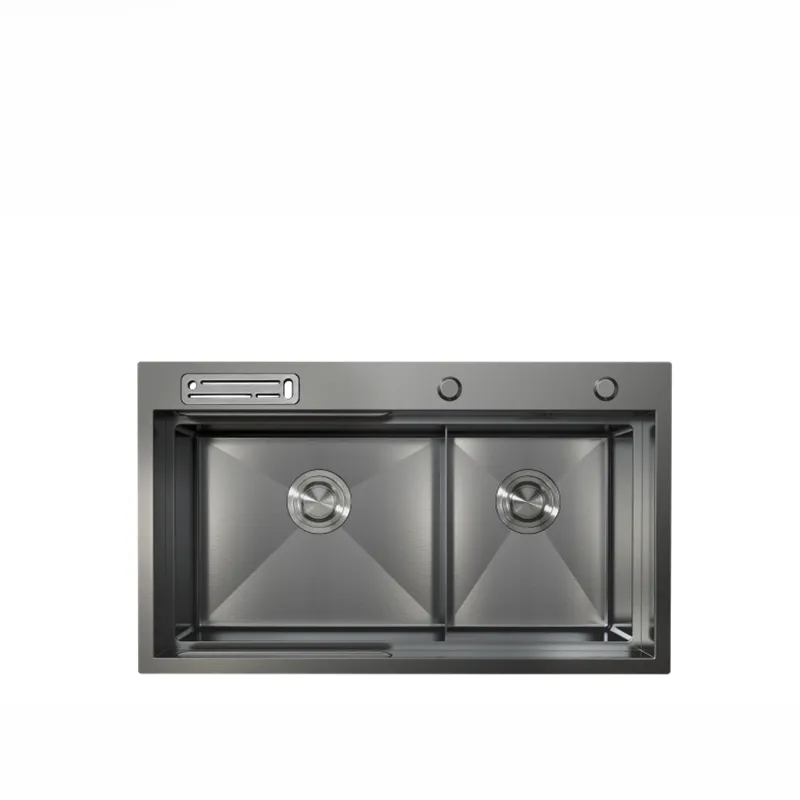
What is the drainage principle of a double bowl kitchen sink?
1. Basic Design of a Double Bowl Structure
A double bowl kitchen sink consists of two independent basins on the left and right sides.
Common types include:
• Equal-divided double bowls: Both sides have the same capacity;
• Unequal-divided double bowls: One large and one small bowl, with clear functional distinction;
• Integrated double bowls: Both bowls share a single drainage system;
• Independent double bowls: Each bowl is connected to an independent drain pipe.
Regardless of the structure, the drainage system must complete the drainage process through the complete path: drain outlet → filter basket → drain pipe → bend (water trap) → main drain pipe.
2. Key Conditions for Smooth Drainage
For a double bowl kitchen sink to maintain efficient drainage, the following conditions must be met:
• Proper pipe design with scientifically angled bends;
• Appropriate drainage slope to prevent backflow;
• Tightly sealed drain fittings to prevent leaks;
• Smooth airflow to prevent vacuum effects;
• Clean and unblocked drain outlet.
A problem in any of these components can lead to slowed water flow, backflow of air bubbles, or water accumulation at the drain outlet.
Why are double-bowl kitchen sinks more prone to drainage problems?
Many people find that single-bowl sinks usually drain smoothly, while double-bowl kitchen sinks are more likely to experience slow drainage. This is due to their structural complexity.
1. Longer Drainage Path and More Complex Structure
Compared to single-bowl sinks, double-bowl sinks require two drain outlets to converge on the same drainpipe.
If the connection is poorly designed, such as a T-joint with an excessively small angle, it can easily cause water flow to clash and pressure imbalance, leading to poor drainage.
2. Interlocking Drainage Design Causes Mutual Influence
In many double-bowl kitchen sink designs, both bowls share a single bend in the pipe.
When one side drains, the other side experiences a pressure change. If there is insufficient airflow, a gurgling sound or backflow of water can occur.
3. Uneven Food Waste Distribution Leads to Accumulation
Food waste generated during washing vegetables and dishes often falls into the drainpipe through the strainer basket.
The double-bowl structure means that two drainage points are working simultaneously, making it more prone to clogging at the pipe confluence.
4. Improper Ventilation Pipe Design
If the kitchen drainage system lacks a proper vent, negative pressure will be created at bends in the pipes.
This "vacuum blockage" will slow down drainage and may even create a "water seal," causing water to stagnate on one side of the double bowl kitchen sink.
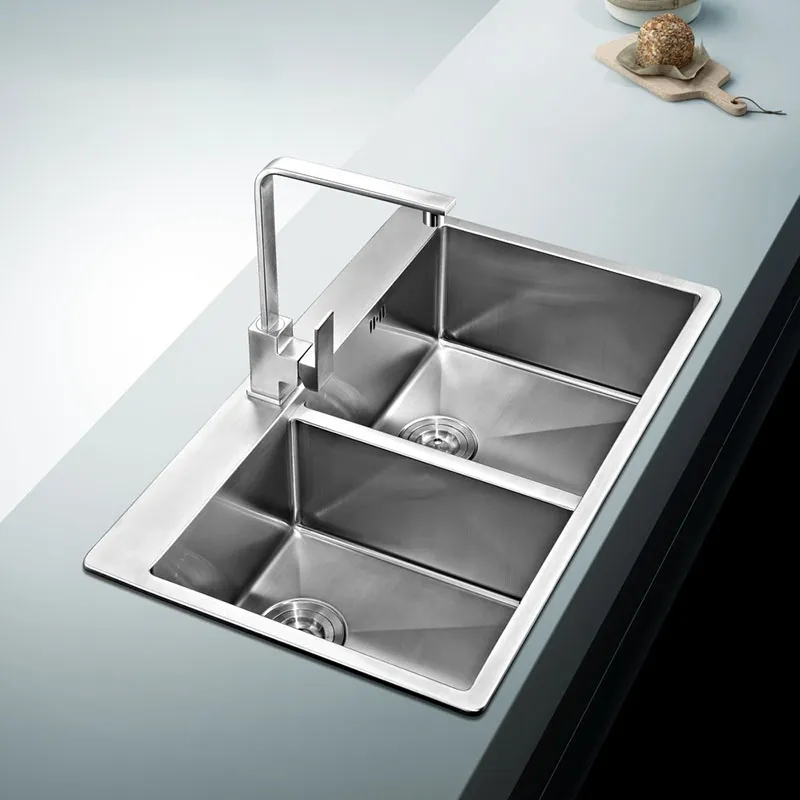
What are some common causes of poor drainage in double bowl kitchen sinks?
Next, we will analyze the common problems that lead to poor drainage in double bowl kitchen sinks in detail.
1. Clogged Drain Pipe
This is the most common cause. Common blockages include:
• Food residue;
• Congealed grease;
• Small fibers (such as vegetable leaves, hair);
• Detergent foam residue.
Grease adheres to the pipe walls after cooling, gradually forming a thick layer of "grease," slowing down water flow.
2. Insufficient Drain Slope
The drain pipe should maintain a slope of at least 1% to 2% to allow water to flow smoothly under gravity.
3. Incorrect Drain Connection Angle
If the drain pipes of the two sinks meet at a 90° angle instead of a 45° angle or a Y-shaped connection, back pressure can easily occur, causing slow drainage or air bubbles to back up.
4. Water Accumulation or Blockage in Bends
Bends (water traps) are used to prevent odors from flowing back, but if they are filled with debris or grease, they can also obstruct drainage.
5. Insufficient Ventilation
Ventilation problems are a hidden killer for double-bowl kitchen sinks.
When draining, air cannot enter the pipes to balance the pressure, and the water flow rate will decrease significantly.
This is often accompanied by a gurgling sound, churning water, or backflow.
6. Clogged Drain Basket or Filter
Some households use drain covers with filter holes, but if not cleaned regularly, the holes can become clogged with grease or residue, appearing clean on the surface but actually hindering flow.
7. Loose or Incorrectly Installed Sealing Ring
If the sealing ring at the drain pipe connection is loose or deformed, it can cause pressure imbalances or even minor leaks, resulting in abnormally slow drainage.
How to Determine Which Part is Causing Poor Drainage in a Twin-Sink Kitchen Sink?
Troubleshooting should follow the principle of "from top to bottom, from simple to complex."
1. Check the Drain Outlet and Filter Basket
Remove debris and see if the water flow returns to normal; Rinse with hot water and observe if drainage speeds up.
2. Observe the Water Level Changes in Both Sinks
If both sinks drain slowly, the problem may be in the main drain pipe below;
If only one side drains slowly, the branch pipe on that side may be clogged.
3. Listen to the Sound to Determine Ventilation
If drainage is accompanied by a "gurgling" sound, it indicates negative pressure in the pipes, requiring improved ventilation. 4. Remove the bend in the drain pipe and inspect for grease buildup.
If the inside of the bend is heavily soiled with grease or has an unusual odor, it should be thoroughly cleaned or replaced.
These steps should help pinpoint the root cause of poor drainage in your double bowl kitchen sink.
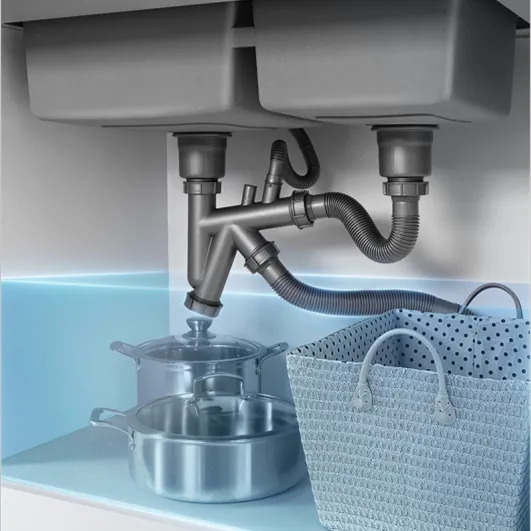
How to improve the drainage efficiency of a double bowl kitchen sink?
1. Clean the drain pipes regularly
• Flush with hot water once a week to dissolve grease;
• Clean monthly with a mixture of baking soda and white vinegar to keep the pipes clear;
• Avoid pouring grease directly into the sink.
2. Optimize the drain pipe connection structure
• Use Y-type connectors instead of T-type connections to reduce water flow backlash;
• Maintain a drainage slope of 1.5%~2% to prevent water accumulation;
• Check for unnecessary bends or dead angles.
3. Install a vent valve or exhaust port
• A venting system balances pressure and eliminates the "vacuum effect."
• In kitchens with limited installation space, an Automatic Vent Valve (AAV) can be installed to assist with venting.
4. Check the proper design of the bend in the drain pipe
• Choose a removable bend design for easy regular cleaning.
• A bend that is too high or too deep will affect drainage speed; maintain a proper height.
5. Replace aged seals and drain pipes
• Aged and deformed seals can cause water flow disturbances or even leaks; they should be checked and replaced regularly.
How to avoid drainage problems with double-bowl kitchen sinks during installation?
Poor drainage often stems from improper installation design.
1. Ensure the drain outlet height is properly matched to the countertop
If the drain outlet is too high, water will not flow smoothly.
Ensure sufficient drop height for the drain pipe below the countertop.
2. Choose high-quality accessories
High-quality double-bowl kitchen sinks typically come with drain assemblies made of 304 stainless steel or thick-walled ABS material, which is clog-resistant and easy to clean.
3. Properly Arrange Pipe Routing
Shorten the water flow path as much as possible, reduce the number of bends, and avoid sharing pipes with other drainage devices (such as dishwashers) to prevent pressure interference.
4. Check Installation Sealing
After installation, conduct a drainage test to ensure that each connection is well-sealed and there is no backflow.
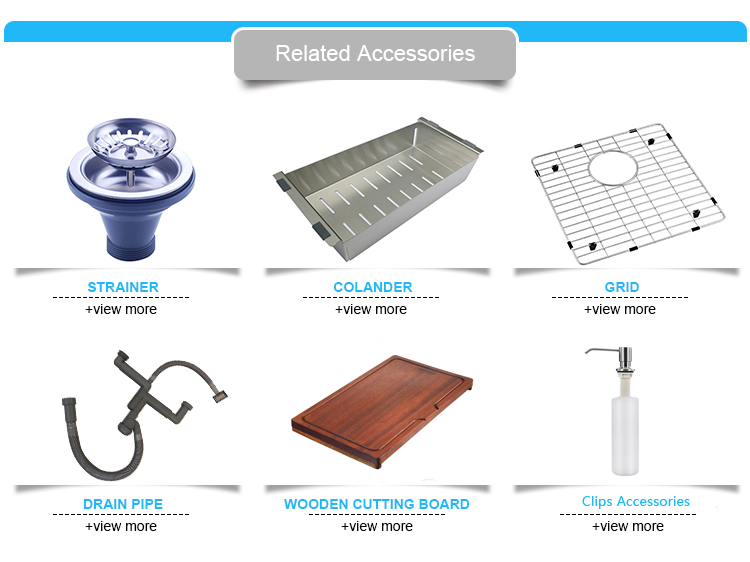
What Usage Habits Cause Slow Drainage in Twin-Sink Kitchens?
Many drainage problems are not due to design or material issues, but rather to usage habits.
1. Pouring in Grease or High-Concentration Wastewater
Hot oil or soup will solidify after cooling, adhering to the pipe walls and forming blockages.
2. Directly Rinsing Food Scraps and Residue
Even with a strainer basket, it is not recommended to flush directly into the sink, as long-term accumulation will clog the drain joint.
3. Using Inferior Dishwashing Liquid
Some cheap dishwashing liquids contain a high proportion of surfactants, which can form a foam blockage layer in the pipes.
4. Neglecting Regular Maintenance
If the drainage system is not cleaned regularly, grease and food residue will combine to form stubborn blockages.
How to Keep Your Double Bowl Kitchen Sink Draining Smoothly?
✅ Daily Maintenance Recommendations
• Clean the drain daily to remove debris.
• Flush the drain with hot water weekly.
• Clean with baking soda and vinegar monthly.
• Keep the sink clean and dry to reduce odors.
• Avoid using corrosive chemical cleaners.
✅ Cleaning Tips
• Use a soft-bristled brush or a long-handled brush to clean the drain pipe.
• Add a small amount of lemon juice to remove odors.
• Regularly remove the U-bend to check for scale buildup.
These methods can significantly improve the drainage efficiency and lifespan of your double bowl kitchen sink.
Why Does My Double Bowl Kitchen Sink Drain Poorly?
The root causes of poor drainage in double bowl kitchen sinks include:
• Inadequate drainage design (e.g., T-joints, insufficient slope);
• Clogged pipes or grease buildup;
• Defective ventilation system;
• Incorrect installation leading to water backflow or vacuum;
• Improper user operation and maintenance.
By paying attention to these key points during installation and use, a double-bowl kitchen sink can achieve the same fast and stable drainage performance as a single-bowl sink.
Does Higold offer customized ODM designs for sinks?
Absolutely. Higold maintains a strong R&D department that develops over 20 new models every year. With more than 500 patents and award-winning designs, we support customized ODM projects for international brands. Buyers can request tailored sink designs, unique finishes, or packaging solutions at competitive wholesale prices. Higold’s ability to combine innovation with affordability makes us a preferred ODM manufacturer in China.

